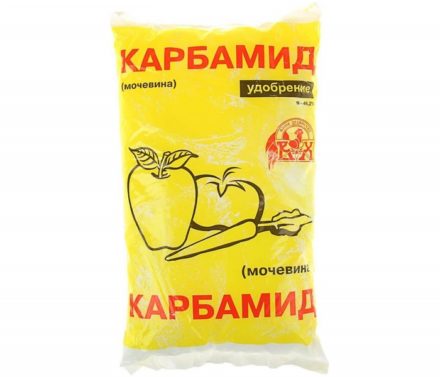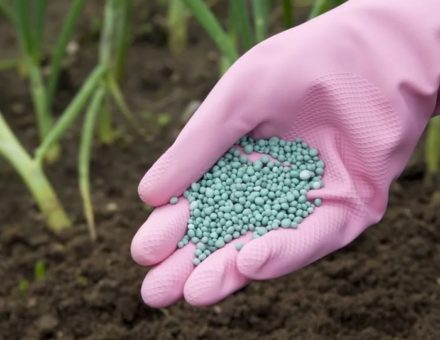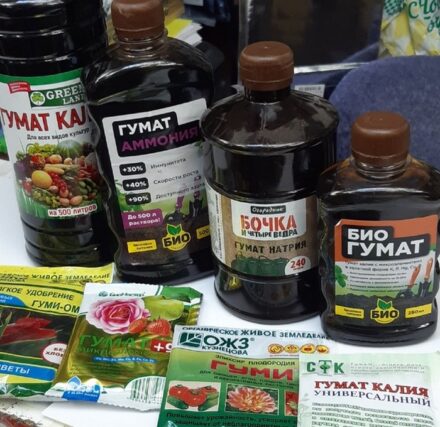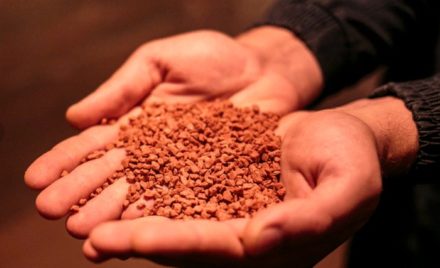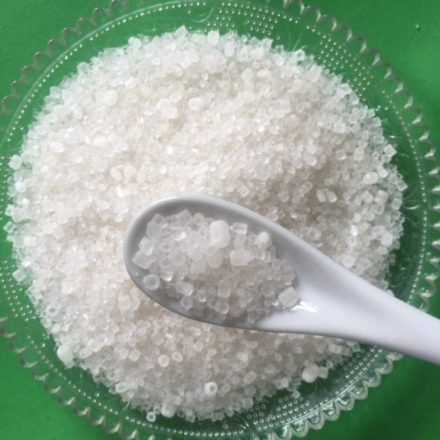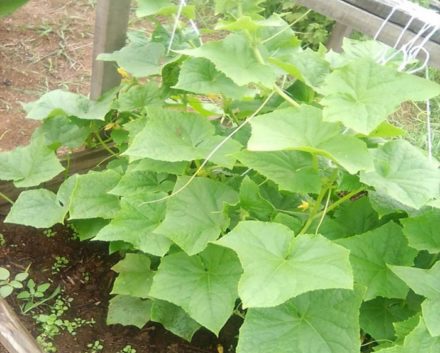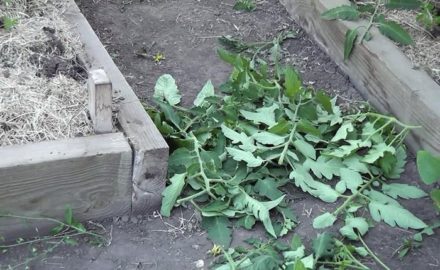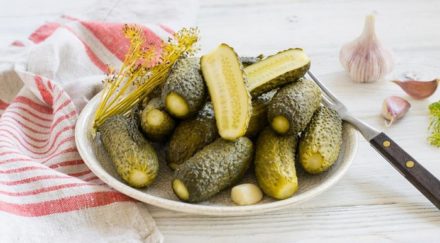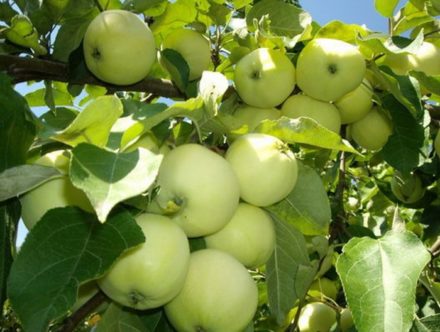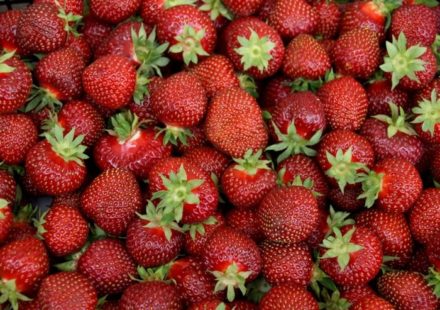Ammonium nitrate as a fertilizer has found wide application in gardening and vegetable gardening. It helps to improve the yield, stimulate plant growth, and make them resistant to various diseases. Due to its properties and low price, the fertilizer occupies a leading position in its segment. What ammonium nitrate is, how to use it, its interaction with other fertilizers and other useful information can be found in this article.
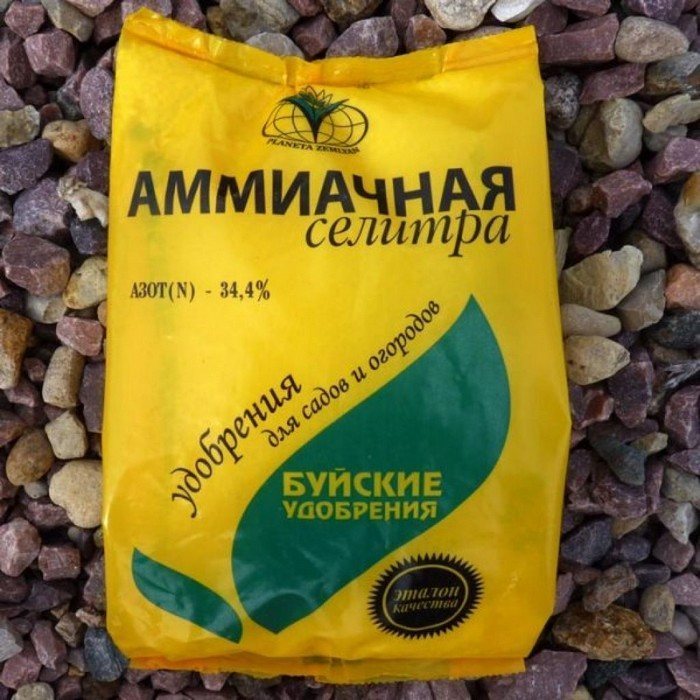
- Description
- Types
- Formula
- Composition
- Properties
- Advantages and disadvantages
- Methods of application
- Application time
- Use as a fertilizer
- Vegetables
- Tomatoes
- Cucumbers
- Root crops
- Potatoes
- Carrots
- Bulbs
- Garlic
- Onions
- Strawberries
- Wheat
- Trees
- Shrubs
- Flowers
- Lawn
- How else can it be used
- From weeds
- From ants
- From wireworms
- For septic tanks
- For stump removal
- Use on different types of soil
- Frequently asked questions
- Where can I buy ammonium nitrate?
- How to store ammonium nitrate?
- Is it dangerous for humans?
- Can I apply ammonium nitrate in the fall?
- Can ammonium nitrate be mixed with other fertilizers?
- Can ammonium nitrate be used to harm plants?
Fertilizer reviews
Show in full ▼
- Description
- Ammonium nitrate has several names: ammonium nitrate, ammonium nitrate. It can be a powder or white granules with a slightly yellowish tint.Ammonium nitrate as a fertilizer: composition, use in the garden
- Skip to content
- Wash
- Ironing
- Stains
Cleaning
Things4Pests3Technique
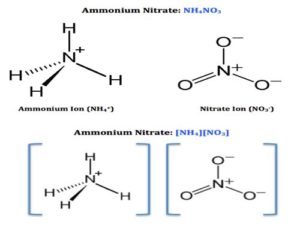
Storage
Dishes4 Interior3.
Garden
Adviсe
Ammonium nitrate fertilizer: use of nitrogen fertilizing in the vegetable garden
Compound
Properties
Advantages and disadvantages
- Methods of application
- Deadlines for depositing
- Application as fertilizer
- Vegetables
- Tomatoes
Roots
- Potato
- Carrot
- Bulbous
- Garlic
- Onion
- Strawberry
Wheat
Trees
- Shrubs
- Flowers
- Lawn
How else can you use it?
From weeds
From ants
From the wireworm
For septic tank

To remove stumps
Application on various types of soils
FAQ
Where to buy ammonium nitrate?2How to store ammonium nitrate?
Is there a danger to humans?
Is it possible to apply ammonium nitrate in the fall?
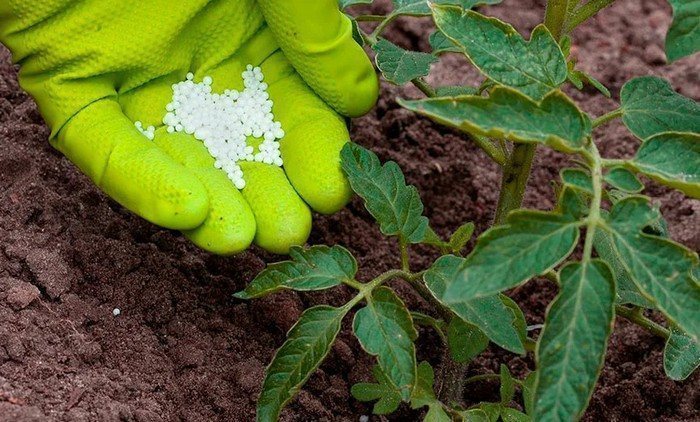
Is it possible to mix ammonium nitrate with other fertilizers?
Is it possible to harm plants by fertilizing with ammonium nitrate?
Fertilizer reviews
Show in full ▼2 Description
Ammonium nitrate has several names: ammonium nitrate, ammonium nitrate. It may be white powder or granules with a slightly yellowish tint.Concentrated nitric acid in combination with ammonia is used for its production. Of all mineral fertilizers, it has the highest percentage of nitrogen content, which is why it has such properties and is very popular.
Types 2Ammonium nitrate is divided into types according to its properties:
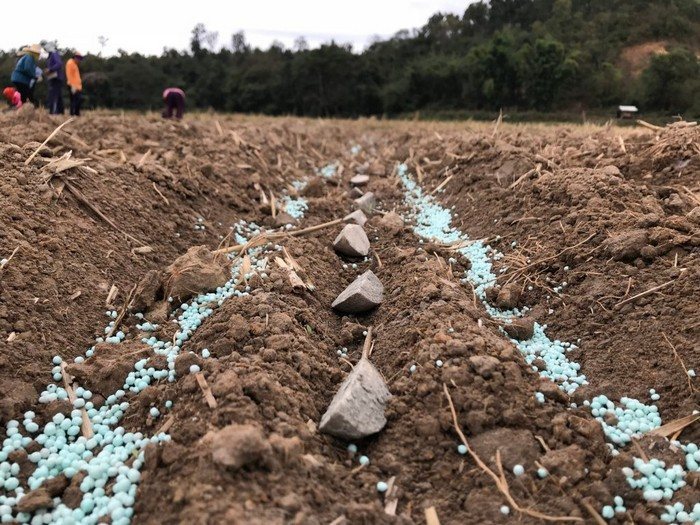
Simple - when using it, agricultural crops are regularly fed with nitrogen. It is recommended to use it as the first fertilizer for young plants. This helps to strengthen and quickly adapt crops to new growing conditions. It is allowed to replace urea.
Brand B - is widely used in gardening. It is mainly sold in stores packaged up to 1 kg. Agronomists advise feeding flowers and seedlings with ammonium nitrate solution after winter.
Ammonium-potassium - used by gardeners to feed fruit trees, which helps to improve the taste of fruits and berries.
Lime-ammonia - granulated and simple. Its composition is rich in calcium, magnesium and potassium. Suitable for all plants, does not oxidize the soil. 2Magnesium - contains magnesium. It will bring the best benefit in fertilizer to legumes and vegetables.
Calcium - its composition is rich in calcium. A distinction is made between dry and liquid.
Porous - not used as fertilizer. 2Formula
Ammonium nitrate (ammonium nitrate, ammonium nitrate) is a chemical compound of nitrogen, oxygen and hydrogen, having the formula NH
NO
. It was first obtained by the German chemist Johann Glauber in 1659. It is used not only as a nitrogen fertilizer, but also as an element of an explosive.
Composition 2The active substance of ammonium nitrate is nitrogen, the mass fraction of which is 30 - 35%.Ammonium nitrate is produced according to GOST 2 2013, according to which the pure synthetic substance anhydrous ammonia NH interacts
and nitric acid concentrate NO
On an industrial scale, this fertilizer is produced in the form of granules treated with special chalk-based substances, thereby ensuring long-term storage without gluing. Since ammonium nitrate is an explosive substance, it is treated with calcium carbonate to reduce its explosive properties.2Properties
Versatility is one of the main and distinctive properties of this fertilizer. It can be used both for feeding in combination with other minerals, and as a separate fertilizer, suitable for almost all agricultural crops in all climatic zones, with the exception of melons.
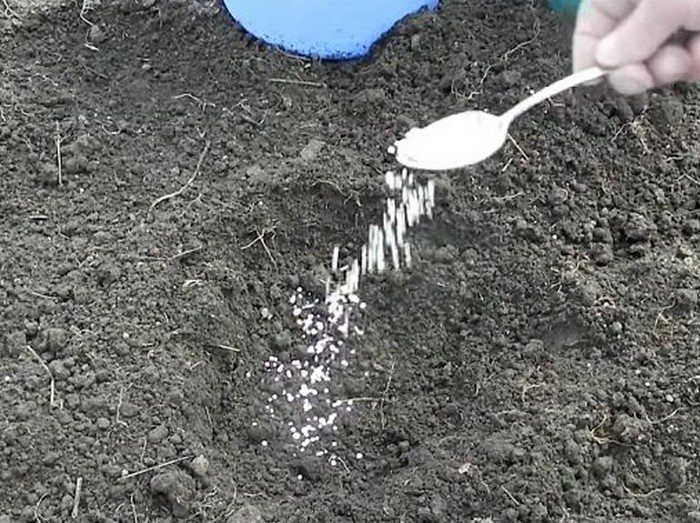
Yes.
No, I use other fertilizers.
No, I use “folk” fertilizers.
Voted:
Advantages and disadvantages
Any fertilizer, no matter how good and universal it is, has its advantages and disadvantages. Ammonium nitrate is no exception.
The advantages of ammonium nitrate include:2the fertilizer is of mineral origin;
possibility of use at any time of the year: from early spring to late autumn, and even during periods of frost and snow;
rapid manifestation of the fertilizer effect;2one of the most inexpensive fertilizers;
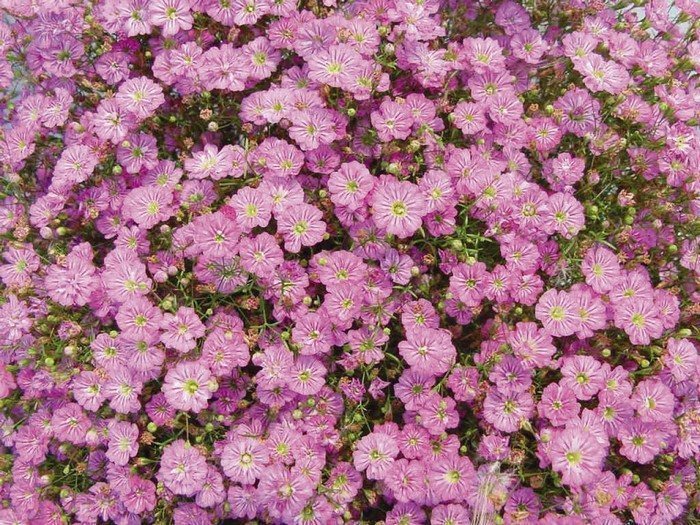
helps to improve not only the general condition of the plant, but also the quality of the fruit.
Sapropel for seedlings: what plants it is suitable for and how to apply it correctly to get good results2Negative characteristics of saltpeter include:

if applied incorrectly, it can acidify the soil;
lower nitrogen content compared to urea;
use only as root feeding;
longer absorption by plants than urea;
The high solubility of the fertilizer contributes to its leaching;
Explosion hazard and possibility of spontaneous combustion of fertilizer.
Methods of application
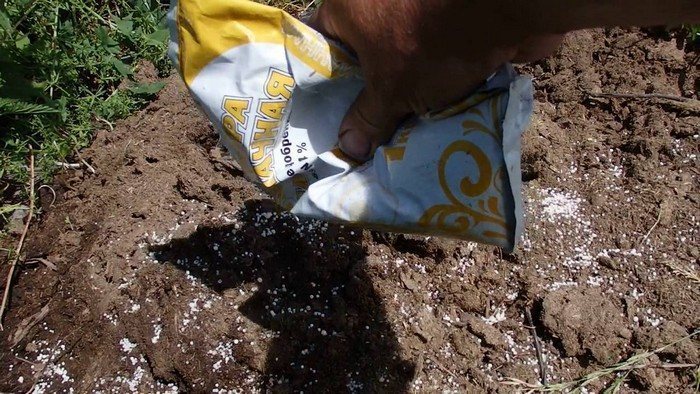
Ammonium nitrate is a universal fertilizer and can be applied in any way:
The main application - fertilizer is added to the soil to prepare beds in autumn and spring. Here it is necessary to remember that if nitrogen is in the fertilizer in nitrate form, then it is better to apply it in the spring so that it is not washed out by precipitation. If nitrogen is in ammonium form, then the time of year does not matter, since this form is not susceptible to leaching from the soil.
Pre-sowing application - applying fertilizer to holes or rows when sowing seeds or planting seedlings, mixing granules with soil.2Root and foliar feeding - applying fertilizer before flowering and fruiting begins, approximately from April to July. You need to be careful with foliar feeding. After fertilizing, burns may appear on the leaves, which will lead to the plant drying out and wilting.
The optimal time for applying fertilizers is early spring, when plant roots have not yet entered the active growth phase, and autumn, since in winter plant roots continue to grow slowly in non-freezing layers of soil. But for each type of fertilizer there are optimal timing for application, when the plant completely absorbs it and is not subject to the harmful effects of fertilizing.
For example, it is not recommended to apply nitrogen fertilizers to fruit trees at the end of June, as this prolongs the growth phase and young shoots will not be able to prepare for winter in time and will freeze.
Ammonium nitrate begins to be used in early spring, when there is still snow on the ground. But the best option for using fertilizer is April-May, or when the snow begins to melt and the average air temperature remains within +5ºС.
The timing of applying ammonium nitrate depends on a number of conditions: on chernozem soils, the fertilizer is applied before sowing and planting seedlings, on heavy and clay soils - in the spring and autumn; in areas with high levels of humidity, it is recommended to apply saltpeter only in the fall; in other regions, most of the fertilizer is applied in the spring, then in small portions throughout the entire growth of the plant.
Application as fertilizer
Ammonium nitrate has a beneficial effect on plants and the effect of its use is noticeable immediately. It improves plant growth, fruit quality, and overall appearance of crops. The fertilizer is suitable as a top dressing not only for vegetables and root crops, but also for house plants and fruit trees and shrubs.
Vegetables
Any fertilizer must be applied taking into account the condition and quality of the soil. Depleted soil must be saturated with nutrients. At 1 m2 it is necessary to add about 50g of ammonium nitrate. If the land is fertilized and cultivated, then about 30 g will be needed for the same area. It is recommended to feed vegetables with ammonium nitrate 2 times - before flowering and after fruit formation.
Tomatoes
Tomatoes are a crop that is planted in open ground as seedlings. In this case, saltpeter must be added when planting tomatoes.To do this, 2 g of fertilizer is poured into each hole. If a solution of ammonium nitrate is needed, then it is made at the rate of 30-40 g of fertilizer per 10 liters of water. And after planting the seedlings, water each bush.
cucumbers
Organic fertilizers with a high nitrogen content are best for cucumbers. But if it is not possible to use organic matter, then mineral fertilizer in the form of ammonium nitrate is suitable. They need to be fed several times. The first application of fertilizer is 2 weeks after sowing the seeds. Here they use watering with a solution of nitrate at the rate of 10 g per 10 liters of water. The third application - at the stage of formation of peduncles - the solution is prepared in proportions of 30 g per 10 liters of water.
Succinic acid for healthy and powerful seedlings: 4 useful tips for use
Roots
When feeding root crops, about 50 g of fertilizer per 1 m2 is added to the soil, if it is depleted.

before planting crops. If the soil is fertilized, then the amount of ammonium nitrate should be reduced by about half. Fertilizer should be applied between the rows of crops, deepening it into the soil by 2-3 cm.
Potato
- There are several ways to feed potatoes with ammonium nitrate. The most common method is to throw fertilizer at the end of a teaspoon when planting a root crop into a hole. The second method is to add 20 g of potassium sulfate and ammonium nitrate per 1 m2 before digging up the garden for planting potatoes.
- . The third method is to pour a solution of ammonium nitrate between the rows in proportions of 20 g per 10 liters of water before hilling. After spilling fertilizer, the bed with root crops must be watered generously with water from a hose.
Carrot
In order for carrots to produce an excellent harvest, they must be fertilized with ammonium nitrate as soon as the first shoots appear.And to make these fruits sweet and juicy, you need to use potassium. Therefore, there is a simple and effective recipe for preparing a solution that includes these two components: 20 g of potassium salt and 10 g of ammonium nitrate must be diluted in 20 liters of water. You need to thoroughly water the carrot beds with this solution.
Bulbous
Bulbous crops are fed with saltpeter in two stages: first, the fertilizer is scattered over the still frozen soil, about 10 g per 1 m
. Second, the same amount of ammonium nitrate is scattered over a slightly loosened bed when the first shoots appear.
The first feeding of garlic with ammonium nitrate is carried out right during planting in spring or autumn. You can sprinkle the bed with dry fertilizer per 1 m
1 tbsp. spoon, or pour the solution in proportions to 10 liters of water with 30 g of ammonium nitrate. After about three weeks, repeat fertilizing with the same amounts of fertilizer.
After each application of ammonium nitrate, in dry or diluted form, the soil must be well watered with plain water.
Onion
Onions, like garlic, are fertilized several times during the growing season. For this crop, it is recommended to apply ammonium nitrate in combination with potassium sulfate and superphosphate.
- The first feeding of onions is carried out when preparing the bed for planting. At 1 m
- you need to take 7 g of ammonium nitrate, 7 g of superphosphate and 5 g of potassium chloride. Mix all this and scatter it where the onions will grow. The next feeding is 14 days after planting. Here a solution is made at the rate of 30 g of fertilizer (3 ingredients are mixed) per 10 liters of water. After another 3 weeks, fertilize the onion bed in the same proportion.
- Strawberry
- In the first year of strawberry life, it is not recommended to apply ammonium nitrate, since the bush will begin to gain greenery and will bloom and bear fruit sparingly. In the second year, you need to carefully add ammonium nitrate at the rate of 9 g per 1 m
- . To do this, you need to dig a trench 8–10 cm deep between the rows, pour in fertilizer granules, cover with soil and water well. In the third year, it is better to use a solution of nitrate in proportions of 25 g of fertilizer per 10 liters of water.
- When watering, it is better to avoid getting the solution on the leaves; it is better to pour it under the root. It is more useful to fertilize in this way in the evening.
We populate the fungus to disinfect the soil: how to properly treat soil with Trichoderma
Wheat
Winter and spring wheat are fertilized differently. Feeding winter varieties is especially important during the germination period before the formation of a bush and the beginning of growth in the spring. In the autumn, before sowing wheat and in the spring, at the beginning of shoot growth, 110-150 kg per 1 ha of ammonium nitrate are added to the soil.
- Spring wheat especially needs nitrogen during the period of bush formation and exit to the trumpet. It is most effective not to divide the fertilizing into several stages, but to apply fertilizer once at a rate of 260 kg/ha before sowing.
- Trees
- Trees need to be fed with ammonium nitrate several times during the summer: as soon as the tree has flowered and a month after the first feeding. It is best to use a solution of nitrate at the rate of 30 g per 10 liters of water. It is recommended for mature trees over 5 years old to pour 1 bucket under each plant. When planting a young seedling, fertilizer granules, approximately 16-20 g, are mixed with soil and poured into the hole.
- Shrubs
- Shrubs are fertilized with saltpeter in much the same way as trees, only with a smaller dosage. At 1 m
- take about 18 g of fertilizer and scatter it over the entire area, which is shaded by the foliage of the bush. The bushes are fed twice a season: in early spring and after flowering.
Flowers
Flowers, not only outdoors, but also indoors, respond very favorably to the addition of ammonium nitrate to their soil. Before fertilizing the soil, you must first prepare it by mixing all the necessary ingredients. Then add a tablespoon of saltpeter to 1 medium pot. To prepare a solution for watering flower crops, you need 10 peas per bucket of water. This amount of prepared liquid is enough for 1 m
flower beds where flowers grow.
Lawn
It is recommended to fertilize your lawn in early spring to give the grass strength after its winter dormancy. Nitrate in the form of granules is scattered over the surface in a proportion of 40 g per 1 m


